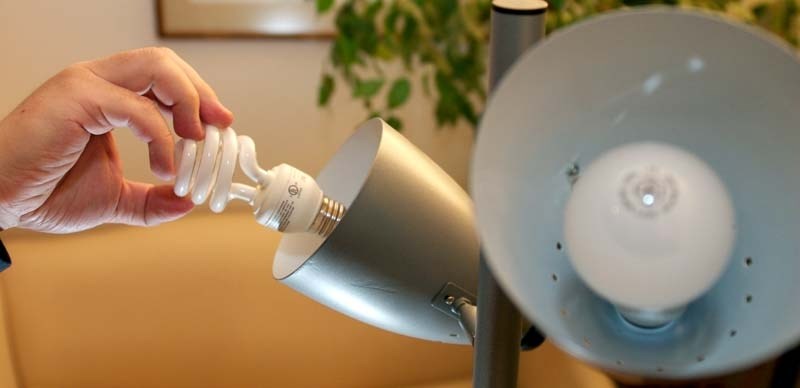Starting next year, the lights are off for incandescent bulbs – at least at your local retail store.
On Jan. 1, 2014, a federal ban on the 100-year-old bulb goes into effect, replacing them in favour of more expensive, modern alternatives, such as compact fluorescent lamps (also called CFLs) or LED bulbs.
Once the ban kicks in, stores will be barred from selling any bulb that was made after Dec. 31. But some retailers already noticed a decrease in the bulb's sale throughout the past year, such as St. Albert's Rona.
"We really don't have much left in the way of incandescent and the few that we do aren't really big movers," said Sean Cowan, assistant store manager. "People are tending to lean toward the CFLs or the LEDs right now."
The new rule will eliminate all 75- and 100-watt incandescent bulb sales immediately, while lower wattage bulbs, such as 40- and 60-watt versions, will be taken off the shelves come Dec. 31, 2014.
Natural Resources Canada reports on their website that the ban on incandescent bulbs is part of the federal government's effort to reduce energy consumption. Incandescent bulbs are said to lose more than 90 per cent of their energy as heat.
The ban is also expected to cut greenhouse gases by about six million tonnes a year. That's equivalent to "taking 1.4 million vehicles off the road."
Higher costs for alternatives
Yet fluorescent bulbs can cost anywhere between $2 and $10 more than incandescent light bulbs (starting at $1.60 at Rona) and some Canadians have taken to hoarding the older bulbs.
Cowan said that's not happening at his store, though he agrees that fluorescent bulbs are more expensive.
"It's considerably more but with the push of the LEDs the CFL price point is no longer high," he said. "Price point wise, you could say maybe $10 to $15 more per (LED) bulb. It really depends on the bulb you are using."
Originally, the ban was set to start in 2012 but was postponed to 2014 to ease consumer concerns over the cost and flexibility of alternative bulbs.
Natural Resources reports though that fluorescent and LED bulbs will pay for themselves as they last longer and use less electricity than incandescent bulbs, yet produce the same amount of light.
Recycling your bulbs
While incandescent lights and non-mercury light bulbs can be disposed off through the regular garbage, residents will have to be more careful when switching to compact fluorescent lamps, said Christian Benson, waste programs co-ordinator for the city of St. Albert.
"The ones that we are concerned with are the compact fluorescent light bulbs and the fluorescent tubes. Those we do take to the recycling depot and they get disposed of at a hazardous waste collection site," he said.
In past years, the number of fluorescent bulbs disposed by St. Albert households has grown. In 2012, the city received 3,100 bulbs. This year, Benson said they counted 3,500.
Fluorescent bulbs discharge mercury-vapor gas to produce light. While breathing in mercury-vapor can be harmful to a person's health, none of it usually remains in the bulb once it has burnt out, said Benson.
He still advises that people dispose the bulbs at the depot.
"In the past decade these things were just thrown away in the landfill but they are being taken a little more serious now," he said. "They are typically stored on site and then we send them to a contractor who puts them through a condenser which absorbs the mercury vapor."
The St. Albert Recycling Depot is located at 7 Chevigny St. in Campbell Business Park.




